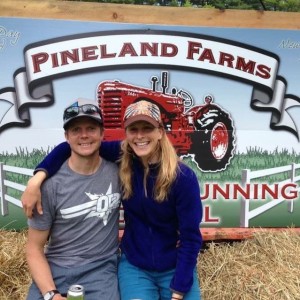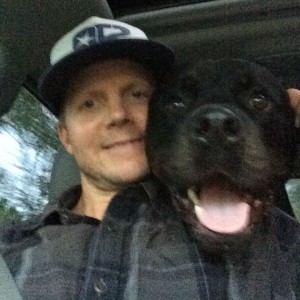By this time, few will argue that exercise is good for your health. But doesn’t this mean physical health? Don’t we use exercise to help tame obesity, lower blood pressure, raise good cholesterol (HDL), strengthen all muscles including the heart, increase aerobic capacity including endurance, enhance quality of life, and on and on. Now, however, we are being told that exercise is also good for the brain. “Your brain is no different than the rest of the muscles in your body–you either use it or you lose it…In general, anything that is good for your heart is great for your brain.” (www.brainhq.com)
Taking this even further, it seems that the Gemini Twins of the fitness world might be combining aerobic exercise with brain challenges. The trick is to exercise the brain much as we would train a muscle, working with principles of overload (pushing it beyond what is comfortable) and specificity (honing particular skills). What’s more, the brain needs to be trained regularly, not randomly.
Recently as part of my continuing education as a Personal Trainer, I participated in a course entitled “Train the Brain.” Much of what I learned was presented in a paper by Lawrence Biscontini, MA, “Building Mental Muscle Toward Neuroplasticity,” (American Fitness, July/August 2015).
Parts of the brain serve different functions. Stated simply, the left side (hemisphere) of the brain controls analytical skills, language, math and speech. When you can’t remember a name or are searching for that perfect word, you need the left side of your brain. Interestingly the left side of the brain controls motor skills on the right side of the body and the right side of the brain controls motor skills on the left side of the body. It is in the right hemisphere that creative processes, problem solving and emotions (among other functions) are controlled.
The brain is made up of a number of sections. The cerebrum is the largest part. The frontal, parietal, temporal and occipital lobes function variously to make decisions, form judgments, pay attention coordinate movements, allow for comprehension, language, speech, behavior, vision and even personality. The cerebellum is important to fitness enthusiasts as it is associated with balance, posture and coordinating motor skills and movements.
Of course there is far more anatomy and function to be learned and discussed pertaining to the brain, but this gives us a good idea of what’s inside our skulls, and it’s quite a lot.
WHAT AFFECTS BRAIN FUNCTION?
That which messes with our brains is often something we have control over. Our lifestyle, daily habits, nutrition and sleep all play roles in disturbing or supporting brain function.
Cortisol has become a headliner. It grabs attention when one is told that too much cortisol, a byproduct of stress as well as other factors, can cause unwanted and excessive fat storage. Too much cortisol in the blood can slow down our thinking and therefore our responses.
Oh, sleep. A sleep-deprived brain is just not going to work right. Common wisdom suggests 8 hours a day.
Dehydration, depression and hypoglycemia affect slow brain activity and impair judgment.
Now here’s a good one: while loud music is distracting, soft music under 50 decibels may stimulate brain function in individuals with brain issues.
Finally, a note to couch potatoes: calcium plays an important role in brain functioning. There is a delicate balance to be maintained. “Even mild activity boosts peripheral calcium to the brain, which assists with the brain’s overall functions.” (Bicsontini)
Neuroplasticity. What a great word. Wikipedia loosely defines this as “an umbrella term that describes lasting change to the brain throughout an individual’s life course.”
This is where the fun begins. Using fitness training concepts of sets, reps, timed segments, etc., we can train the brain to better perform and to help manage fear, anger and depression. BUT, to train effectively, brain exercises should be performed along with physical exercise. The key is to put the two together to maximize results.
BRAIN GAMES
Here are a few brain games for you to try alone or with friends.
Mobile meeting. This may be the simplest. Conduct your next meeting, visit with a friend to plan an event or have your book club discuss their selection during a walk, hike, run or ride.
Choreography or movement design. The mental task can be a simple one but must be connected with the movement. For example, perhaps you know how to do a simple grapevine lateral move or step or jump in a pattern like hopscotch. Do this while at the same time performing a math task such as the phone numbers game.
Start the movement pattern then suggest a 4-digit number. Recite the digits, then do so backwards, then add them, etc. About 10 minutes is enough of this. You can make this drill more difficult by adding the first 3 digits to the number.
For some reason, or for many reasons, the number “7” is a good one. How many things can you think of that involve 7? We’ve already used a 7-digit phone number. How about 7 days in a week or 7 colors in a rainbow? Base the number of selected items to tax the brain on the number 7.
I once participated in a brain training game in which we formed a circle and, in unison, moved 7 steps to the right and 7 steps to the left. We did this over and over again while each person took a turn telling a story. The story began with one line. The 2nd person repeated that one line and added another sentence to it. The 3rd person repeated those 2 lines and added another sentence. And so it went. It was like the old fashioned game of “telephone” X10. What kept us laughing were the multiple collisions as folks forgot to transition from right to left or back again.
Step aerobics. Do you remember step aerobics classes? Find yourself a step and repeatedly step up-up-down-down changing lead foot every 8 times. Recite what you had for breakfast. Have your friends join you. Then recite what you had for breakfast backwards. Then recite what you had for breakfast using the beverage first. Then 2nd. Then 3rd. You definitely get the idea.
Head and shoulders, knees and toes, knees and toes. Did you just sing those words as you read them? You could do so while marching in place then mix up the order or add other body parts to add up to that magical 7.
As you can see, these games are simple and relatively unlimited. They are just a start to tease you to create your own. All you need is a basic movement pattern, dance step or even jump rope and enough creativity to find your challenge. To be sure, a group of willing friends helps as well.
BRAIN GAMES first appeared on June 26, 2016, ACTIVE VERMONT, Rutland Herald and Times Argus, written by Linda Freeman, Field Editor.



